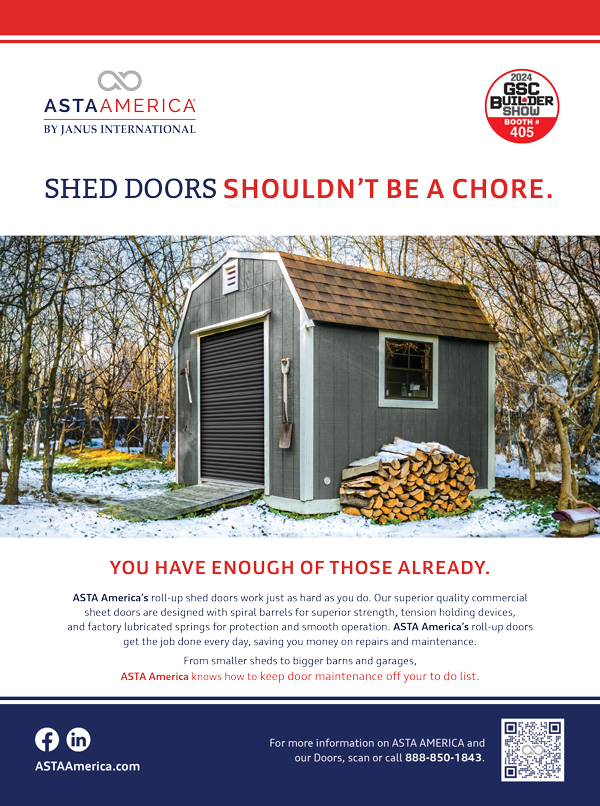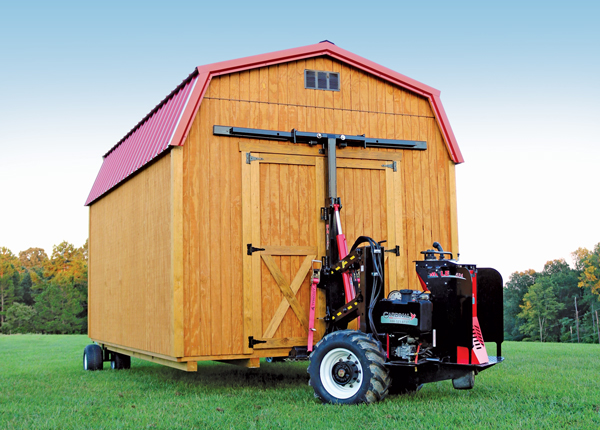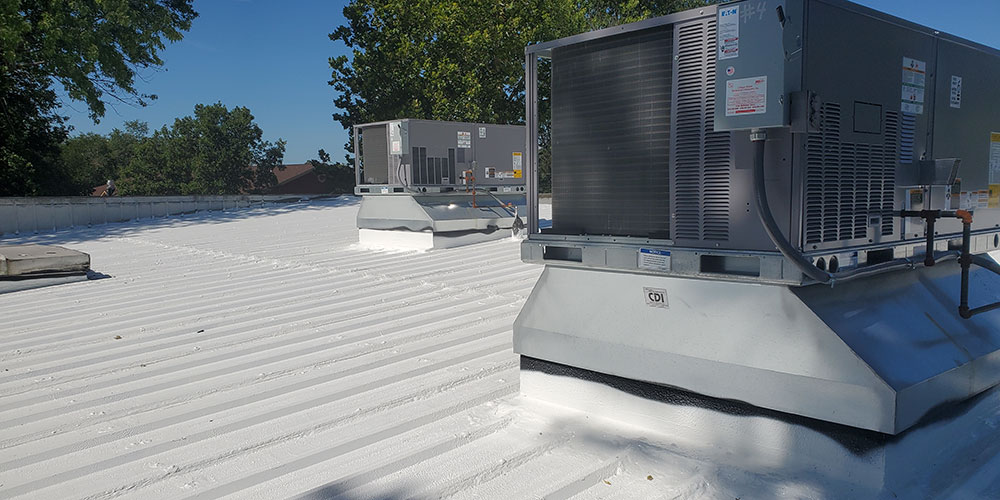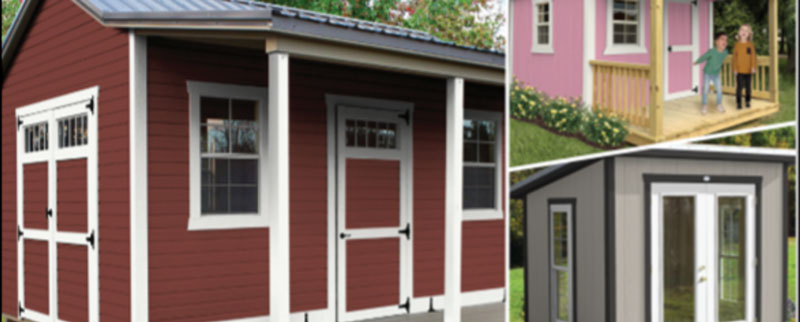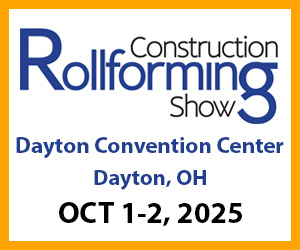Best Practices For Touching Up Your Shed
by Jamie White, PPG Segment Specialist
The shed looks great! … And then the mule rubs against it, or a limb hits it, or somebody lets the ladder fall down the side of it. Now what? When painting of any kind, “touching up” is part of the process. In shed manufacturing, it is a very important part of the process. As we visit shed manufacturers around the country, “touch ups” are a common topic of discussion. Here, we cover some of the best practices for improving the touch up of your sheds. We will cover touching up solid color sheds and the even bigger challenge of touching up sheds with semi-transparent urethane finishes.
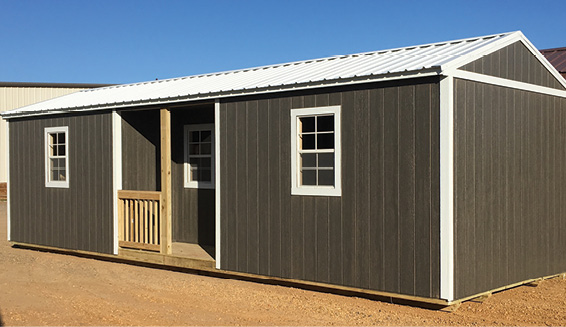
When you’re away from the shop and at the customer’s location or at a dealer’s lot, it may be more efficient to paint corner to corner on a wall. Photos courtesy of PPG Truefinish.
Solid Color Paint
Touching up the paint on a shed is not an exact science. There are many variables that can affect the appearance of paint when it dries, such as temperature, method of application, batch differences and other factors that may or may not be within your control. That being said, there are some best practices that will improve the effectiveness of your touch ups. Below is a list of the most common practices related to touching up a solid color shed.
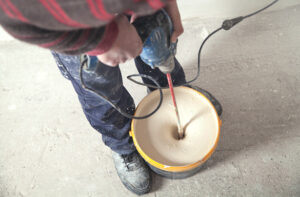
Thoroughly drill-mix paint before initial painting and before touch-ups.
1. Proper Mixing
Before painting the shed the first time, thoroughly drill mix the paint. Then drill mix again before touching up to help ensure that you have the true color when you first paint the building and the same color when you touch it up. If possible, try to use the same pail of paint for the initial painting and for touching up.
2. Keep the Spot Small
If you have a small scratch or ding on the surface, then try to apply paint only to that spot. You can use Q-Tips, artist brushes, or another fine-tipped tool. A common mistake is to use a paint brush/roller and brush/roll out or “feather out” a large area when only touching up a small spot.
3. Paint to a Visual Break
When you have larger spots to touch up, you can paint up to a visual break (example: the edge of the board, a groove in the LP/DuraTemp) or up to a trim board. This will help hide where the touch up paint stops and the original paint starts.
4. Higher Film Build Affects Appearance
In most cases, the first time the building was coated the paint was sprayed on. Touching up with a brush/roller results in an area with more layers of paint than the original. This thicker section can tend to have a higher sheen, so although the touch up spot disappears when you look straight at it or close up, you’ll see it if you stand at an angle. Adding a little water to your touch up paint to dilute and lighten the coat can help with this problem.
5. Paint Corner to Corner
When you’re away from the shop and at the customer’s location or at a dealer’s lot, it may be more efficient to paint corner to corner on a wall rather than to touch it up and hope it matches. This could save you a return visit.
6. Reduce the Need for Touch-ups
Unfortunately, scratches or dings seem to be inevitable. To minimize occurrences, look through your manufacturing and delivering processes to see if anything can be done to help reduce the need for touching up. For example, use foam or pads on scaffolds, ladders, mules and forklifts so they don’t scratch the walls. When delivering, use pads or other protective barriers between straps and the surface of the building. We hope you will find this information useful and it will improve the quality of your paint process.

Before Chestnut touch-up.
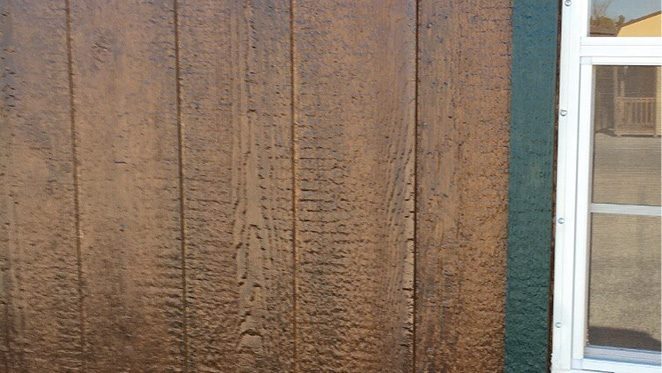
After Chestnut touch-up. The shed was originally coated with PPG Semi-Transparent Chestnut Urethane, and was then touched up with Chestnut Aerosol.
Semi-Transparent Urethane Finishes
Semi-transparent urethanes are a premium product in the shed industry. They have given builders the opportunity to offer a stained appearance on a pre-primed substrate and they have a much longer life compared to standard acrylic paints, as well as the traditional penetrating stains that have been used on T-111 buildings. The nature of semitransparent coatings are the more you apply, the darker or more opaque they get, which makes touching them up virtually impossible. As you try to make the light spot darker, you inevitably make a dark ring around the spot. This has been a nagging issue within the shed industry for years. In our continued effort to revolutionize the shed coatings industry, PPG has developed touch-up aerosols and markers that match our semi-transparent urethanes. They are easy to use and significantly improve your ability to touch up small areas.
The cans and markers were developed to go on light and allow you to build your color with multiple coats. When you coat a shed with semi-transparents, you will have areas that are darker and some that are lighter, therefore the cans/markers allow you to dial in your color to the desired look. Other benefits of these touch up products are:
• Fast dry formula — which allows you to apply multiple coats quickly.
• Non-freeze formula — Allows your drivers to keep a set in their trucks year round.
• Markers — Are excellent for touching up deep scratches or gouges in the wood.
• Aerosols — Are excellent for touching up light areas and edges of trim boards.
• Easy to use — Your dealers and drivers can now touch up the sheds.
If you are interested in learning more about or trying some of the aerosols/markers discussed, reach out to your local PPG sales representative or contact Jamie White at [email protected]. GSCB
To better undertand how to get the best coatings system, contact Jamie White ([email protected]), who will put you in contact with a PPG Truefinish Specialist in your market.


